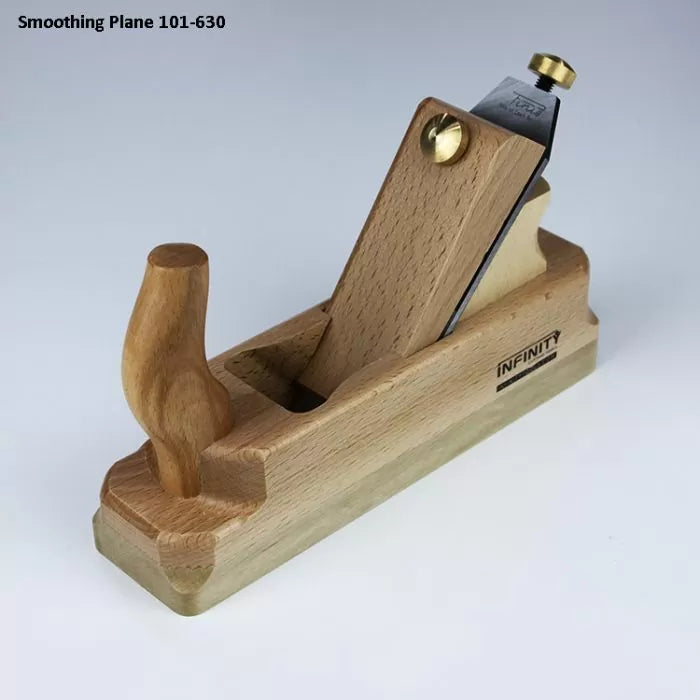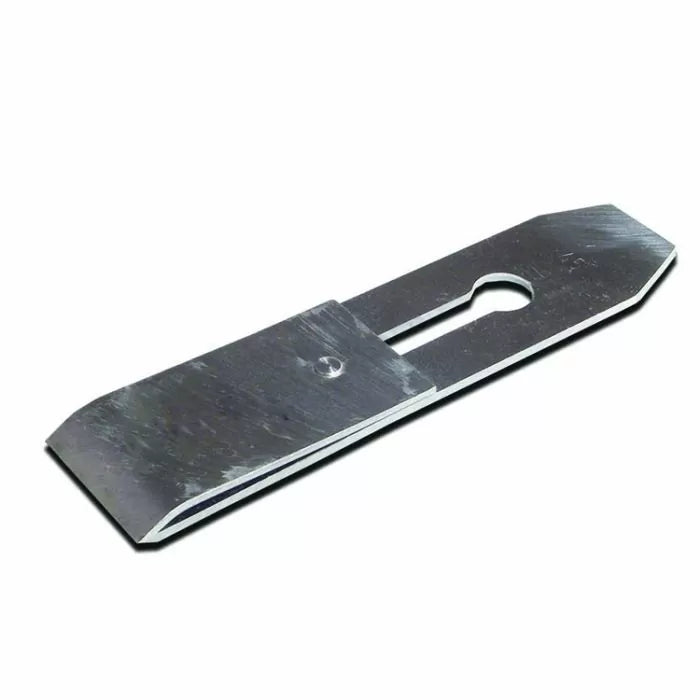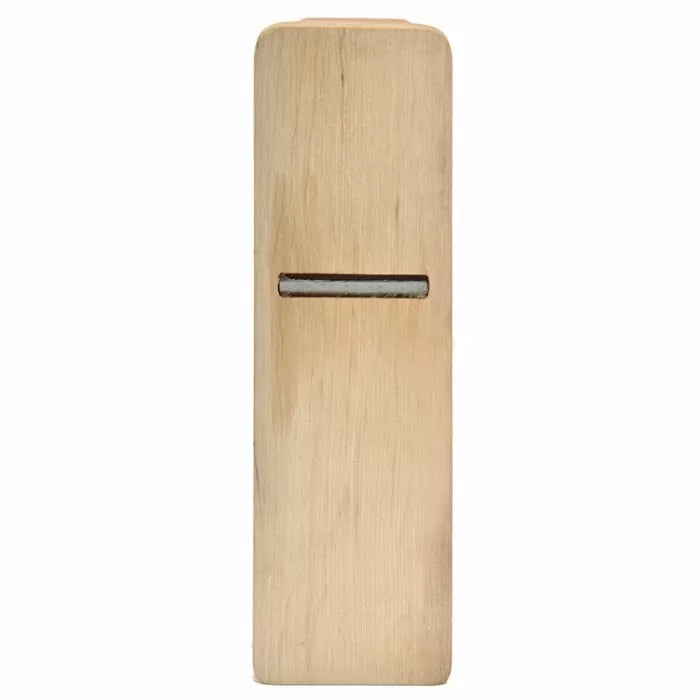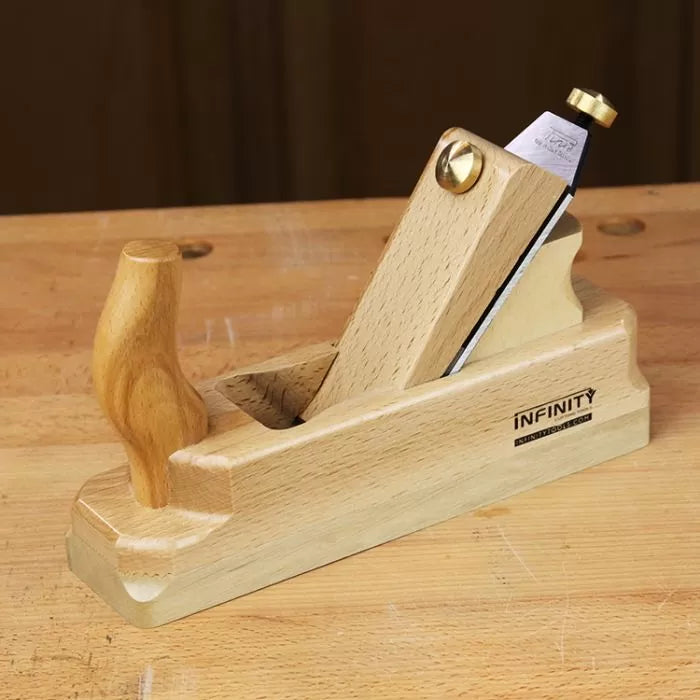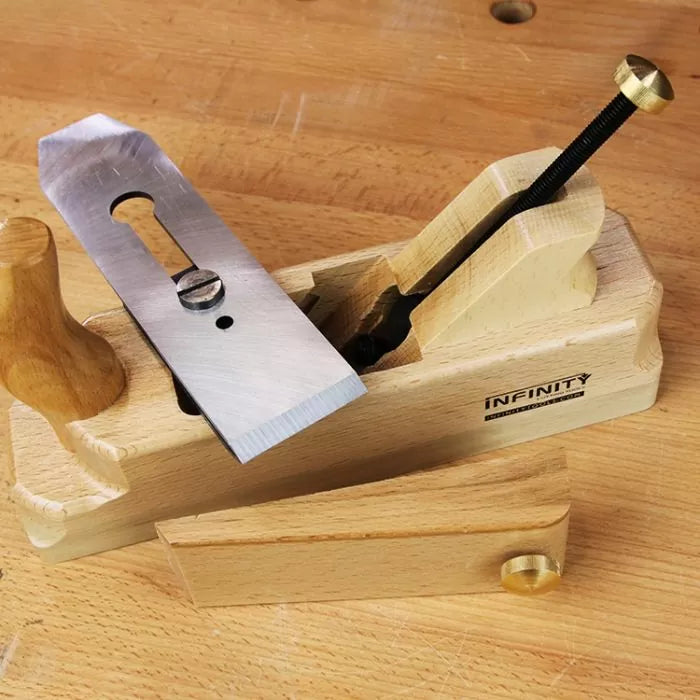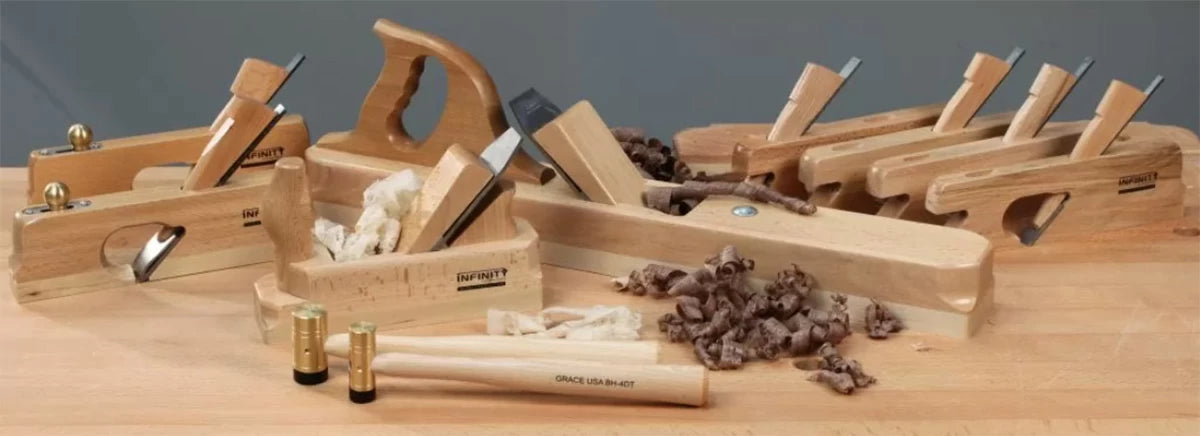
Infinity Cutting Tools has been looking far and wide for good-quality, value-packed hand planes for a couple of years. We finally found them. They're not your typical Western-style steel-body hand plane you're probably familiar with. Our hand planes are a wood-body, European style that has been around for hundreds — if not thousands — of years. As a matter of fact, they're still a common tool in the workshops of a lot of European craftsmen. As of December 2018 Our premium wood body bench planes now feature a Norris style adjustment mechanism that makes them very easy to use. This traditional adjustment mechanism allows the depth of cut to be adjusted by turning the brass knob.

Pressing the knob right or left will adjust the skew of the iron in the plane body. The wedge also features a brass tensioning screw with thumb knob that makes securing the iron a snap and improves tension near the end of the wedge where it matters most.
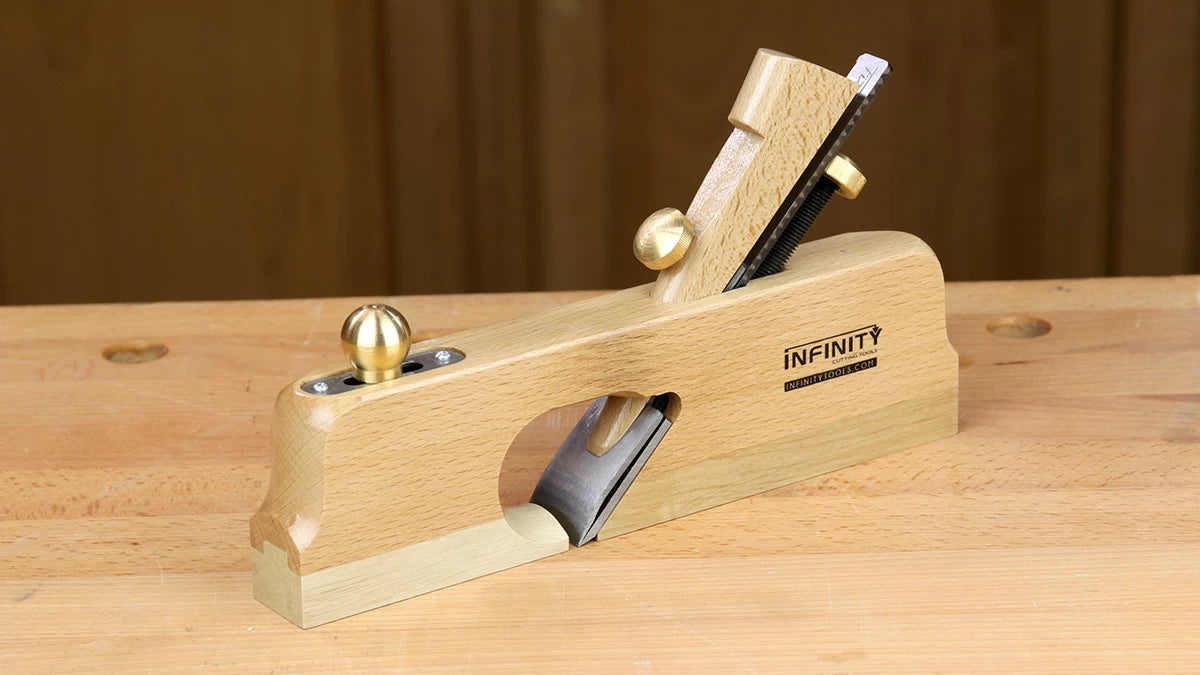
In my opinion, there is no other tool in the woodworking shop that can adjust a joint within thousandths of an inch for a seamless fit. There is no other tool that can create a glass-smooth surface way beyond what you can do with sandpaper.
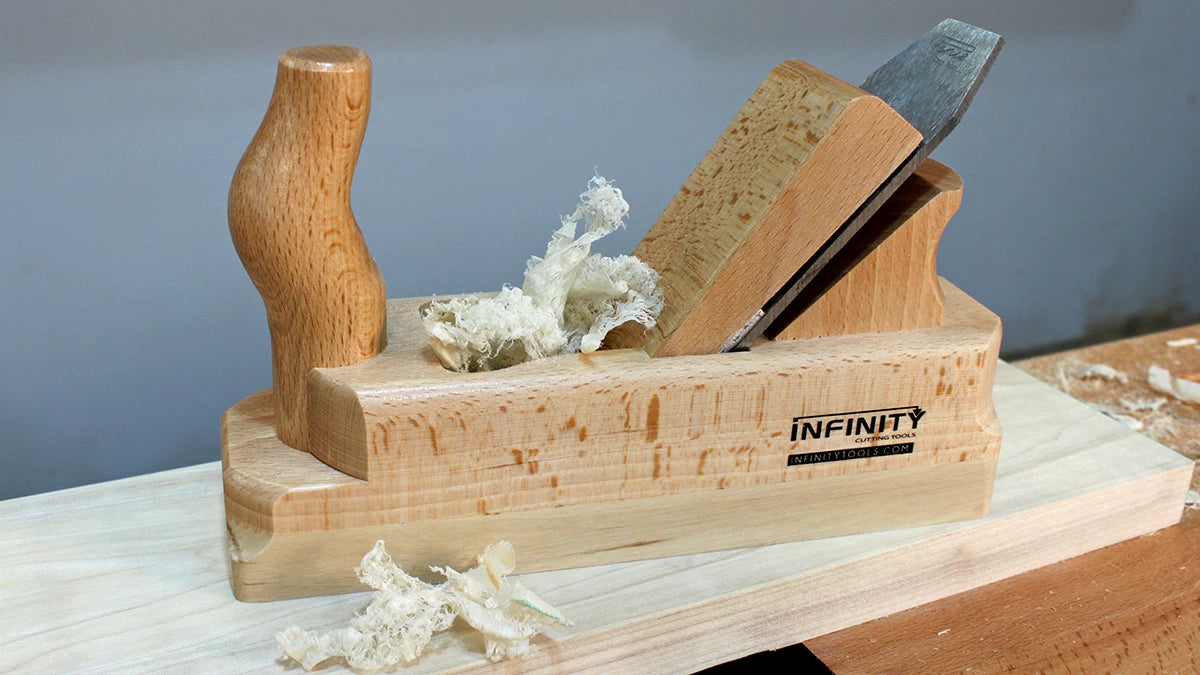
Because they're made of European beech hardwood with a long-wearing hornbeam sole, they offer a tremendous value over the more western-style of metal hand planes. They'll be around for generations.
Infinity offers a selection of bench planes and rabbet planes. All are available individually or in money-saving packages.
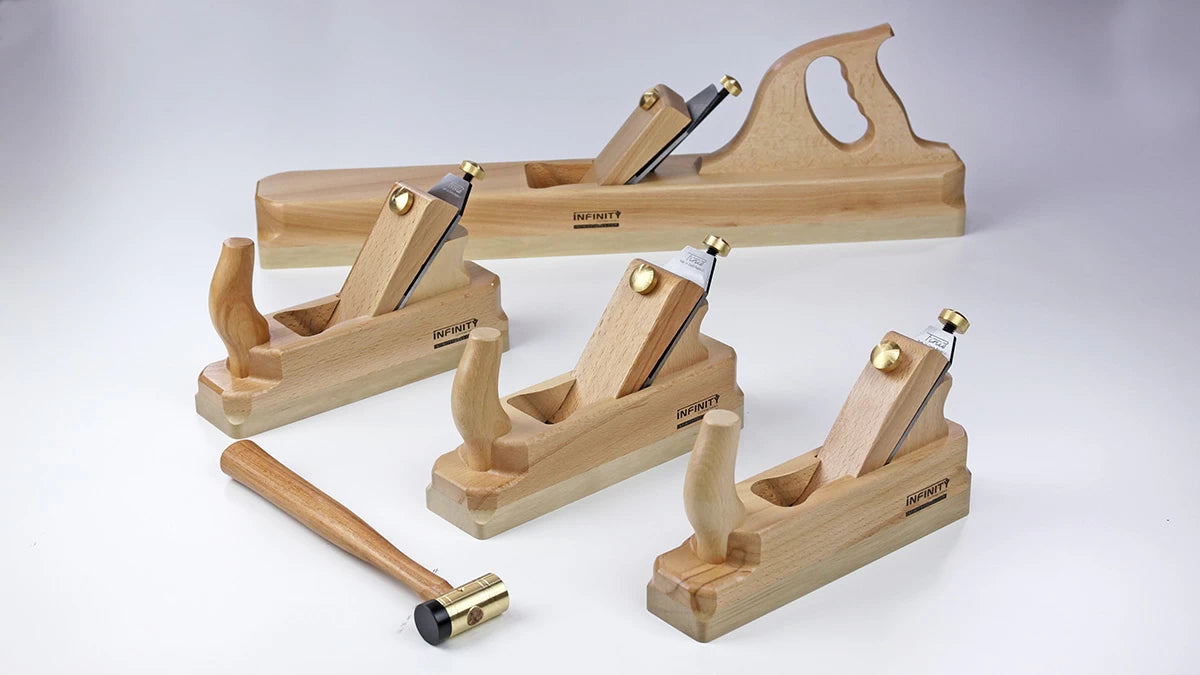
Let's start with the bench planes.
The scrub plane is a unique plane because it's designed from the ground up to remove a lot of material quickly. This is due to the wide mouth opening and radiused blade.

After the scrub plane, you'll likely reach for the "jack-of-all-trades" jack plane. It can serve as a jointer on shorter workpieces. It can smooth the surface left by the scrub plane. And, for most hardwoods, it can work great as a smoothing plane.

Our smoothing plane is identical in size and shape to the jack plane. The only difference is the higher bed angle on the smoother (49°) vs. the 45° on the jack plane. The smoother excels at creating a glass-smooth surface on the workpiece that can't be matched with sanding.
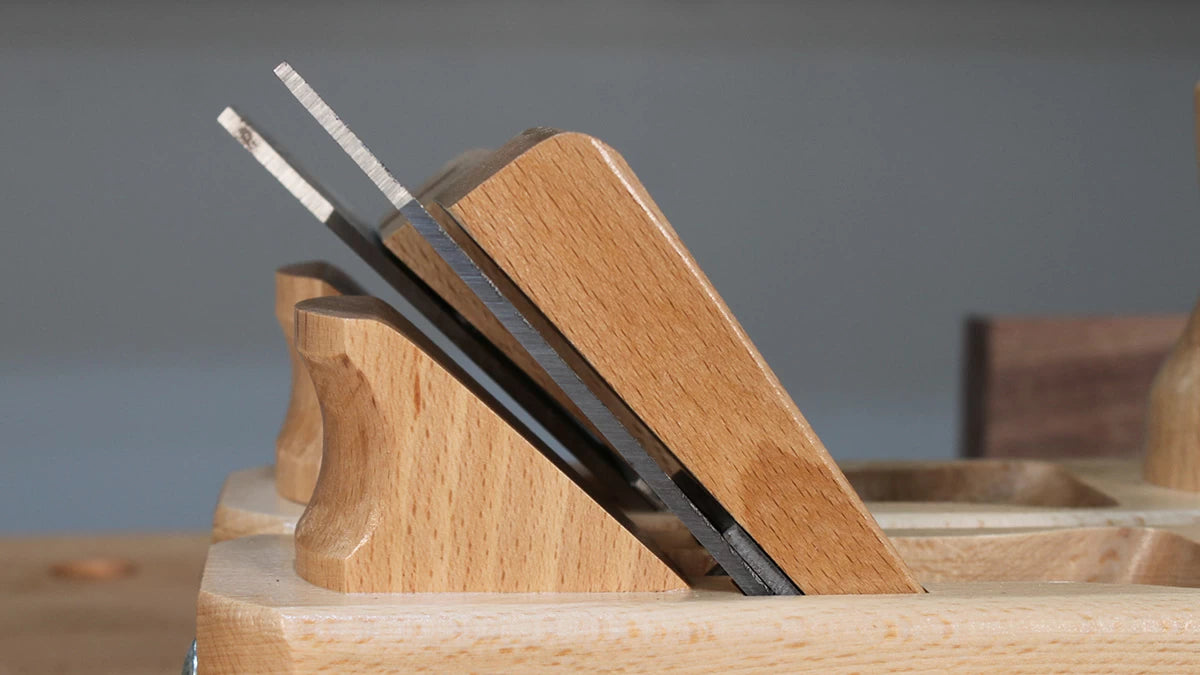
That brings us to the rabbet planes. The iron (or blade) on a rabbet plane extends all the way to the sides of the plane body. This makes them uniquely suited for tweaking the size of rabbets, the fit of tenons, depth of dadoes, and much more.

Let's start with the double-rabbet planes shown below. They come in four different widths to suit a variety of joinery tasks in the shop.

But what's even more unique is that these planes each have two positions for the plane iron (see photo below). There's the traditional position for the iron at the center of the plane body. But there's also a useful position at the front of the plane. This "bullnose" position is ideal for trimming joinery into a corner where a traditional rabbet plane can't reach.

There are two other rabbet planes offered by Infinity Cutting Tools, both have adjustable soles for setting the mouth opening for the shaving. In general terms, the thinner the cut you're making, the tighter the mouth opening should be. This helps the shaving to break away from the wood without tearout. The skewed rabbet plane also features an iron that is at an angle to the plane body instead of the more common 90° angle.
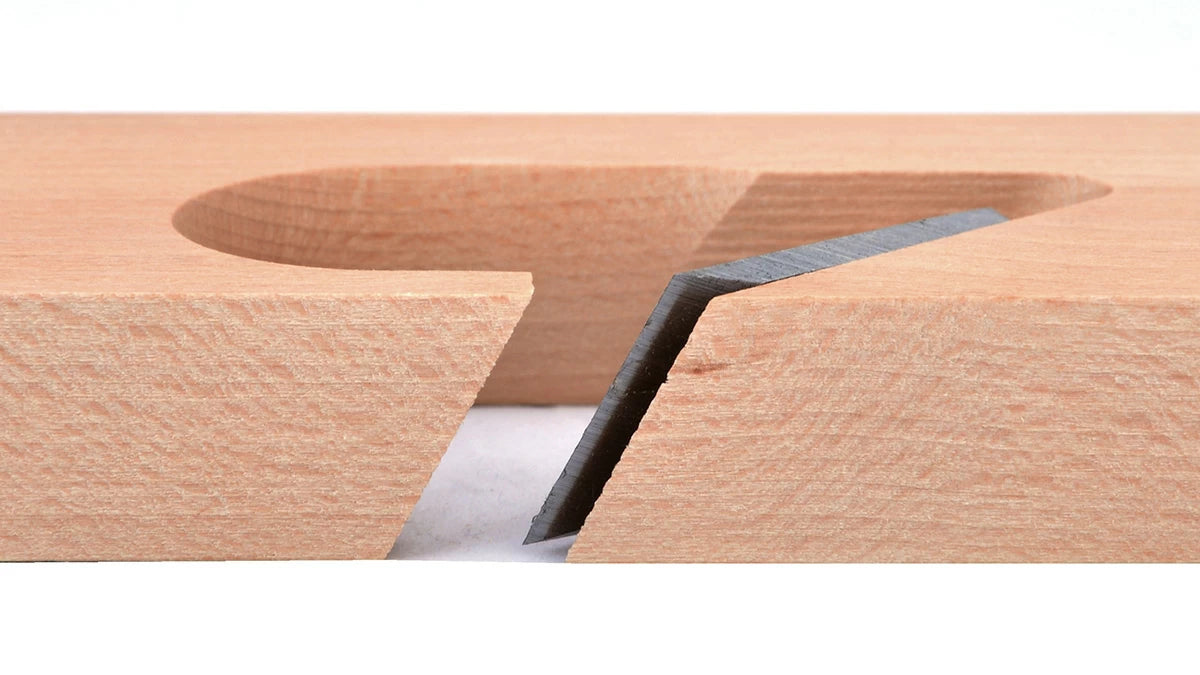
Now, when you receive your new hand plane, you'll want to sharpen and hone the blade. This involves flattening the back and polishing the bevel. To do this, we recommend the Sandpaper Sharpening System. Andrew shows you how this system works in this video. Another great sharpening solution is our 5-pc. Diamond Stone Sharpening Package. Diamond stones cut quickly, stay flat, and last a very long time. Whatever your choice of sharpening system, the techniques are the same
After the iron is sharp, all you need to do is learn how to adjust the blade. It's not as difficult as you might think. The video below shows how easy it is.

